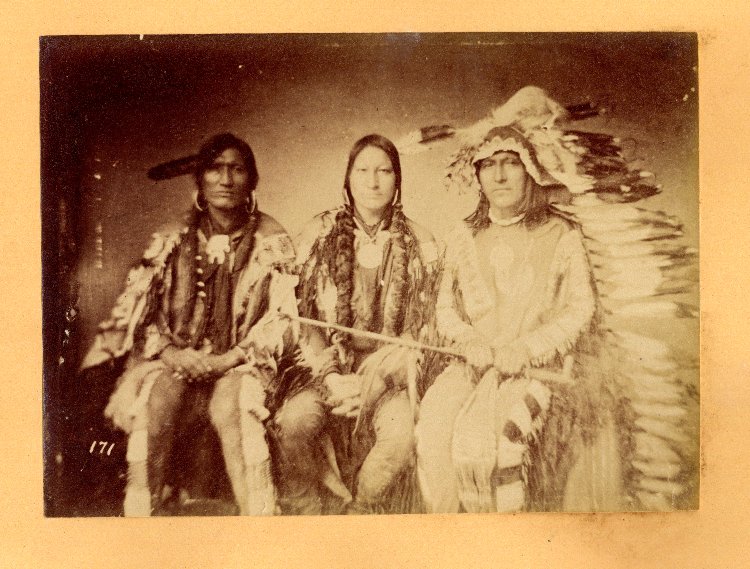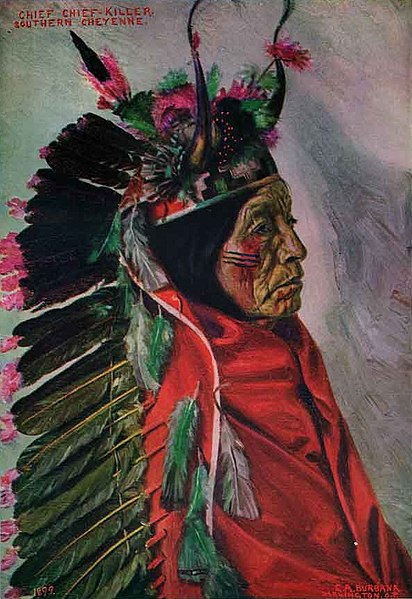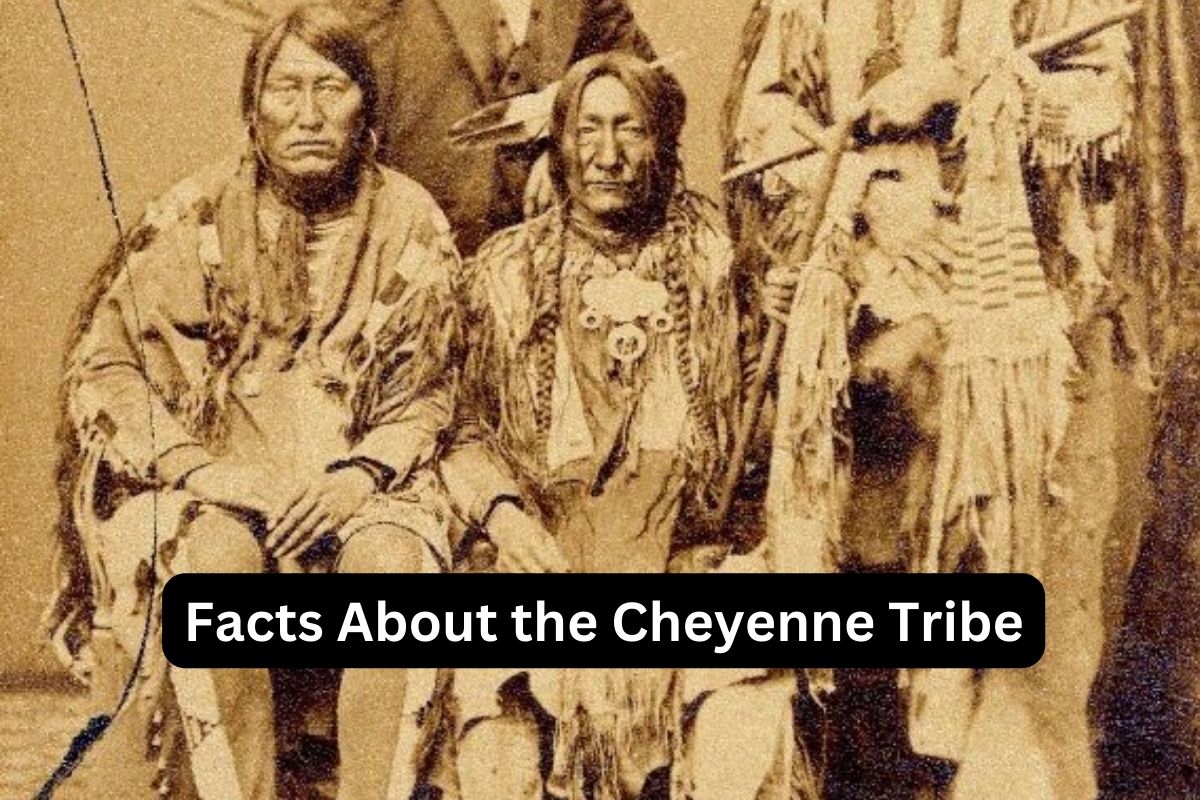The Cheyenne Tribe, also known as the Tsitsistas, is a Native American tribe with a rich and complex history. They traditionally inhabited the Great Plains of North America and were known for their nomadic lifestyle and reliance on buffalo hunting.
The Cheyenne Tribe is divided into the Northern Cheyenne and Southern Cheyenne, with each group having distinct locations and histories.
Despite facing challenges such as forced relocation and cultural suppression, the Cheyenne people have maintained their cultural identity and continue to preserve their traditions.
They have contributed to the arts, literature, and activism, and are actively engaged in economic and cultural development initiatives.
Cheyenne Tribe Facts
1. The Cheyenne Tribe are a Native American tribe that historically inhabited the Great Plains of North America
The Cheyenne Tribe, also known as the Tsitsistas, have a long and rich history in North America. They are part of the larger Algonquian language family, which includes numerous Native American tribes across the United States and Canada.
Also Read: Iroquois Tribe Facts
The Cheyenne people are closely related to other Plains tribes such as the Lakota Sioux and Arapaho.
They historically inhabited the Great Plains of North America, primarily in present-day Montana, Wyoming, Colorado, and Kansas.

2. The Cheyenne people have a rich and complex history
Archaeological evidence suggests that the Cheyenne have inhabited the Great Plains for thousands of years.
Excavations at sites such as the Olsen-Chubbuck archaeological site in Colorado have uncovered artifacts and remains that date back as far as 2,000 years. These findings provide insights into the tribe’s early cultural practices and way of life.
3. Traditionally, the Cheyenne were a nomadic people who relied heavily on bison hunting for their sustenance
Traditionally, the Cheyenne were nomadic hunters and gatherers who followed the buffalo herds across the Great Plains. The buffalo played a central role in their culture and provided them with food, clothing, and shelter.
Also Read: Osage Tribe Facts
The Cheyenne developed sophisticated hunting techniques and utilized every part of the buffalo, wasting nothing. They would set up temporary camps and live in tipis, which were portable and well-suited to their nomadic lifestyle.
These dwellings were made from wooden poles and buffalo hides, and they could be easily assembled and disassembled as the tribe moved from place to place.
4. The Cheyenne Tribe is divided into two major divisions: the Northern Cheyenne and the Southern Cheyenne
The division of the Cheyenne Tribe into the Northern Cheyenne and Southern Cheyenne occurred due to a series of historical events and forced relocations. In the 19th century, conflicts with European settlers and the U.S. government led to the displacement of many Cheyenne people from their ancestral lands.
As a result, some Cheyenne bands were relocated to reservations in Oklahoma, while others managed to retain their homelands in Montana.
Today, the Northern Cheyenne primarily reside on the Northern Cheyenne Indian Reservation, which was established in 1884, while the Southern Cheyenne are part of the federally recognized Cheyenne and Arapaho Tribes in Oklahoma.

5. The Cheyenne language, known as Tsitsistas, belongs to the Algonquian language family
The Cheyenne language, known as Tsitsistas, is a unique and complex language that belongs to the Algonquian language family. It is characterized by its distinctive phonetics and grammatical structures.
The Tsitsistas language is considered critically endangered, as the number of fluent speakers has significantly declined over the years. Efforts are being made to revitalize and preserve the language through language immersion programs, cultural initiatives, and educational materials.
6. The Cheyenne Tribe has a strong cultural and spiritual heritage
The Cheyenne Tribe has a deep spiritual and cultural heritage. Their belief system encompasses a complex array of ceremonies, rituals, and practices that are deeply intertwined with their relationship to the natural world.
Central to Cheyenne spirituality is the concept of interconnectedness, where all living beings and natural elements are considered to be part of a larger spiritual fabric.
They believe in the existence of powerful spiritual entities, such as the Great Spirit, various animal spirits, and ancestral spirits, and engage in ceremonies to seek guidance, healing, and harmony with the spiritual realm.
Sun dances, sweat lodge ceremonies, and vision quests are among the important rituals that hold cultural and spiritual significance for the Cheyenne people. These practices continue to be cherished and passed down through generations, contributing to the preservation of their cultural identity.
7. The Battle of the Little Bighorn, also known as Custer’s Last Stand, is one of the most famous events involving the Cheyenne Tribe
The Battle of the Little Bighorn, also known as Custer’s Last Stand, is a significant event in Cheyenne history. In 1876, tensions between Native American tribes, including the Cheyenne, Lakota Sioux, and Arapaho, and the U.S. government reached a boiling point.
The tribes united and engaged in a battle with the U.S. Army’s 7th Cavalry, led by General George Armstrong Custer. The Native American alliance emerged victorious, inflicting a major defeat on the U.S. forces.
However, this victory was short-lived, as it resulted in intensified military campaigns against Native American tribes in the aftermath of the battle.
8. The Cheyenne Tribe has faced significant challenges and adversity throughout history
Like many Native American tribes, the Cheyenne people faced significant challenges throughout history. The forced relocation and loss of their traditional lands, particularly during the Indian Removal era of the 19th century, had a profound impact on their way of life.
The Cheyenne, along with other tribes, endured cultural suppression, attempts at assimilation, and the disruption of their social and political structures.
Despite these hardships, the Cheyenne have persevered and maintained their cultural identity, passing down their traditions, language, and values to future generations.
9. Today, the Cheyenne Tribe is actively involved in various economic and cultural development initiatives
Today, the Cheyenne Tribe actively engages in economic and cultural development initiatives to support their communities and preserve their heritage. They have embraced various economic activities, including agriculture, ranching, and small businesses, as means of sustaining their livelihoods.
Additionally, the Cheyenne people are involved in the production of traditional arts and crafts, such as beadwork, quillwork, and pottery, which serve as a way to preserve their cultural practices and generate income.
They also promote cultural tourism, inviting visitors to learn about their history, traditions, and land through guided tours and cultural events.
10. The Cheyenne Tribe has made important contributions to the arts, literature, and activism
The Cheyenne Tribe has produced notable individuals who have made significant contributions to various fields.
One prominent figure is Allan Houser (1914-1994), an acclaimed artist and sculptor of Chiricahua Apache and Cheyenne descent. Houser’s sculptures, which often depict Native American themes and figures, have gained international recognition.
Another notable individual is Jaune Quick-to-See Smith, a Cheyenne artist and activist known for her powerful artworks that address social and political issues faced by Native American communities.
Moreover, Virginia Driving Hawk Sneve (1933-2021), a Cheyenne author and educator, dedicated her life to promoting Native American literature and education, writing numerous books that shed light on Cheyenne culture and history. These individuals exemplify the talent, resilience, and cultural pride of the Cheyenne people.
